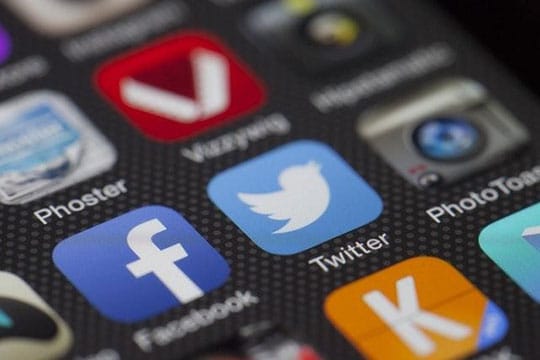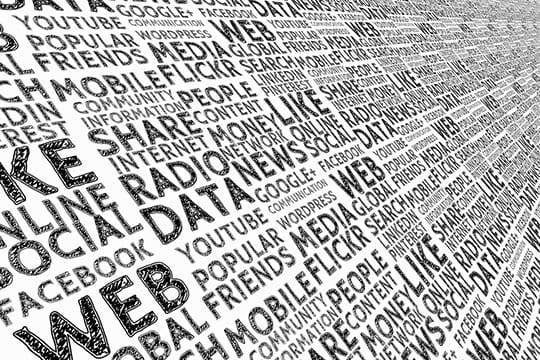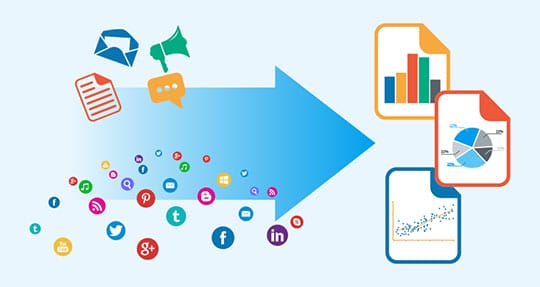The use of Big Data is increasingly widespread in companies. The large volume of user data offered by the internet, makes brands have the personalization of messages within their reach and offer the potential customer exactly what they are looking for, at the most appropriate time, throughout their passage through the Marketing Funnel.
One of the challenges of Big Data is to understand what is relevant to extract appropriate insights and knowledge, without ‘noise’ or distractions. This understanding and understanding of the data is what makes us able to customize our relationship with the user/consumer. We can use the channel in which they are present, at the right time and with an offer that suits their profile and needs. That implies very sophisticated monitoring of the community, interest groups and profiles until reaching the individual consumer.
If we add this use of Big Data in social networks, you can change our brand vision completely. Because, thanks to this data, we can anticipate consumer preferences, which will attract customers and generate sales.
From Big Data to Social Big Data

Social networks are a source full of data, but unstructured, but that can help us obtain actionable information. These data are often subjected to analytical conduits. It uses word processing, sentiment analysis or even machine learning algorithms to draw conclusions about the business. Conclusions, which can be used to create a social media strategy based on the knowledge gained.
Several studies on Big Data reveal that of all the data and information generated by users on social networks, brands manage to take advantage of only 0.5%. Also, in Spain, according to IAB, 86% of Internet users between 16 and 65 use social networks, which represents a total of 19 million users in Spanish territory alone. This is where the concept of Social Big Data appears.
This concept refers to the strategy that focuses on collecting, managing, organizing and leveraging all the information provided in social networks by users, in order to improve the relationship between businesses and their online communities.
Recommended for you: Can Big Data Help Save Endangered Species? If Yes, How?
Social networks and their ability to generate data

According to Google, in 2020 each user will have an average of 5GB of mobile data per month; gigabytes that will be used almost entirely in social networks. The amount of data generated is, in any case, huge. Managing such a large volume requires a strategy to match, as well as efficient procedures that allow real information to be taken advantage of. Otherwise, it would not be profitable to work with Social Big Data.
According to Internet Live Stats, these are some facts about social networks:
- More than 40% of the world’s population has an Internet connection.
- Facebook has almost 700,000 articles and 34,000 “likes” every minute.
- Facebook has more than 2,000 million active profiles.
- Almost 1000 photos are published per second on Instagram.
- Twitter produces almost 250,000 new tweets per minute.
- YouTube loads 4,300 minutes of video every minute.
Why it is important to incorporate Social Big Data into a social media strategy

Thanks to the data, we can know exactly the consumer behavior and adapt our social media strategies accordingly. Social Big Data will lead to a way to communicate with our customers in a much more personalized way; as we have said and therefore, to improve our relationships with them and their experiences and ‘moments’ with our brand.
In addition to this, having adequate data when designing our strategy can form certain advantages.
Identify the audience and the right time to impact our content
Have you ever observed a trend in your own social media activity? Do you use Facebook every night before bed or just when you wake up?
These trends or behaviors are very interesting for data analysts and especially for content. We can track the activity of our audience; can segment them based on the time of day of their activity and the amount of time dedicated to each of the social media platforms.
We can use this data to offer the best content to a potential customer at the right time. For example, if the target we want to address is university students, we may find greater ‘peaks’ online activity in the afternoons and evenings. Therefore, this time could be perfect for our publications to obtain maximum visibility.
Here also, the term appears: ‘Micro-moments’. This concept appears a few years ago from Google, based on the idea that mobile devices have revolutionized the way users relate to brands. There are small ‘parentheses’ or moments, in which the user has a need. Thanks to Social Big Data, we can detect these ‘micro-moments‘, through social listening tools, for example, and in this way, solve those needs at the right time.
Knowledge of the territory of the brand
We are used to understanding that our competition is always that which does the same as us and offers the same products or services. In the data age, this has changed, since the competence of a brand is one that is in its own territory, struggling to capture the attention of the same buyer people.
Thanks to the data that we can extract from the social networks. We can obtain a competitive advantage, investigating those things that attract the attention of our consumers, in the territory in which our brand is positioned, and who is winning the battle to capture their interest. For example, let’s imagine that our brand takes out healthy smoothies. One of its buyer people is “young women, athletes, who like to take care of themselves and have the right time for it since they also work”.

The logic in traditional marketing would encourage us to investigate any other brand of smoothies in the market and consider its direct competition from ours, but in the world of Smart Data Marketing (or smart data-based marketing), things change a lot.
Our competition, will not be the manufacturers or marketers of smoothies. They will be all those brands that have already conquered those women we want to impact, within the healthy territory. For example, they could be electric companies that sponsor women’s careers, or brands of hygiene products, that are sensitized with different pathologies that affect the female sex.
Having clear the territory of our brand, thanks to Social Big Data, we can listen to it and detect who are those brands that are at the top of that territory and discover why and how they have managed to connect with that buyer that we interest.
You may like: 10 Great Ways to Use Big Data for Small Businesses.
Improvement in our innovation and reaction capacity
Thanks to the data, it is possible to access a history of campaigns; this will make us learn from the mistakes of the past so that we can establish more efficient actions.
Nor can we underestimate the impact that the ability to plan and anticipate trends with respect to new products or services has on any strategy.
Relevant data of our consumers

Social networks are not only a place to share our content and news and interact with our users. They are also the best tool to obtain relevant data for our company, such as:
Perception of our brand and sentiment analysis:
We can monitor negative, neutral or positive feelings, opinions and attitudes regarding our brand or our products, prices, customer service. Thanks to this we can react and adapt accordingly. Also, we can detect issues taboo or matters that we can talk about, related to our sector; this generates positive feelings in the consumer.
Segmentation and loyalty of our consumer:
Analyzing the conversations, their behavior, the brands that follow, we can more easily define our buyer people by categories much sharper than mere demography, such as their tastes, attitudes, interests, hobbies. This allows us to hit the target when we communicate with him and offer him a more personalized experience. This will help to keep him loyal and make it easier for him to advance in his buying cycle.
Moments conducive to sale:
Thanks to social networks we can detect activity peaks and when users are more likely to click on our publications.

Detection of potential consumers:
We can detect people who, although not yet our client, have similar patterns to those that are. Once detected, we can take advantage of what we know to take them to our land and convert them into customers. It can be either through a promotion or through more direct sales strategies.
Influencer Detection:
With social networks, we can find out not only who our clients follow, but also the people who most influence them, who are not necessarily the ones with the most followers. This will help us focus our efforts and even save costs (sending product samples only to the most influential people.
You may also like: 11 Tips to Protect Your Business Social Media Account from Hackers.
Conclusion

The data provided by social networks is now an essential aspect for companies to incorporate into their daily operations. However, before doing all this, there is the main prerequisite that must be met; develop a mentality in which data, converted into information, is the main axis of decision making.
Social networks are the main way for companies to meet and interact with their audience. Because what they think on the networks is the same as they can say on the street or at home. For this reason, the analysis of the data they provide us is crucial to achieving the success and loyalty of our users and the use of Social Big Data is key, when defining a successful social media strategy.
This article is written by Gurbaj Singh. Gurbaj is a fun-loving guy and keeps a vision to explore the common things “Uncommonly”. The man is fond of cars, technology and not to miss, whiskey. His professional career is as interesting as him where he applies his SEO dexterities every day, thus, challenging the Google algorithms. You can follow him on LinkedIn.





